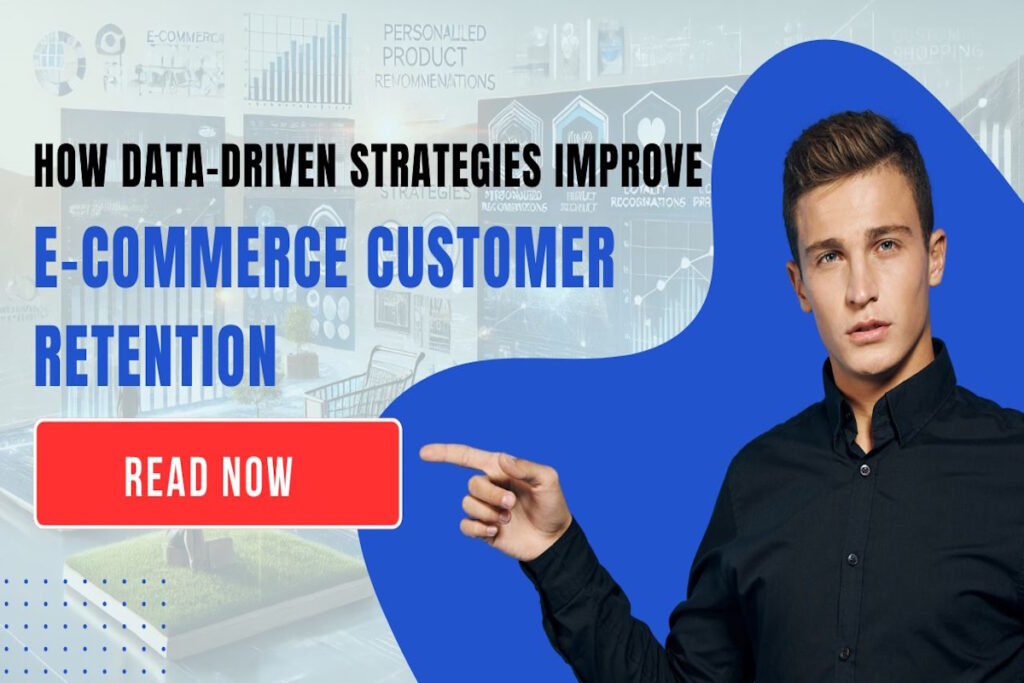Customer loyalty is widely regarded as one of the strongest drivers for e-commerce companies at the present time. As competition rises, and consumers’ preferences shift, turning to data-driven solutions can be particularly useful for increasing customers’ loyalty and future business. This blog goes deeper into interpreting the customer’s behavior through data while helping organizations remain relevant by adopting strategies to retain customers.
Data Importance in Studying Consumer Conduct
Marketing for customer dedication is not possible without adequate knowledge about their likes, uses, discomforts, and choices. Data serves as the foundation for this understanding by providing actionable insights into:
- Purchase History: Deducing purchase behavior by assessment of previous deals made.
- Website Engagement: Monitoring the activities visitors make with the view of ascertaining what particular product or aspect is most in demand.
- Customer Segmentation: Grouping customers based on their demographic characteristics, purchasing behavior, and interest in specific company products to develop effective retention strategies for every segment.
Additionally, collaborating with a reliable data provider or database provider ensures the accuracy and relevance of the information used to analyze consumer behavior. Not only does data reveal what customers desire, but also what they lack—what they never knew they needed.
Key Data-Driven Strategies for Improvement of Retention
Personalization
Customization is expected in most online selling platforms. By working with a trusted data vendor, businesses can:
- Recommend products based on customer browsing and purchase history.
- Send personalized email campaigns featuring products aligned with customer interests.
- Enhance website experiences by tailoring content to individual preferences.
Such activities make shopping more interesting, thus giving consumers more reasons to shop more frequently and buy.
Predictive Analytics
Powered by real-time data and advanced algorithms, predictive analytics enables businesses to:
- Find customers likely to churn and offer targeted incentives to recall them.
- Predict seasonal demand shifts to ensure stock availability.
- Suggest optimal pricing strategies based on market trends and consumer behavior.
By leveraging a specialized leads provider, companies can enhance their ability to predict and adapt to customer needs, ensuring improved retention rates.
Optimized Loyalty Programs
Loyalty programs foster a sense of appreciation among customers, and data ensures they remain effective. By analyzing participation metrics, businesses can:
- Identify high-performing rewards and replicate their success.
- Customize loyalty offers based on customer preferences.
- Monitor program engagement to refine benefits over time.
Collaboration with a reliable database provider helps track these metrics efficiently, enabling businesses to optimize their loyalty initiatives.
Real-Time Customer Support
Getting support at the right time can significantly enhance a customer’s experience. Businesses utilizing real-time data can:
- Track common queries and address them proactively through FAQs or chatbots.
- Equip support teams with customer history for personalized problem-solving.
- Monitor response times to ensure consistent support quality.
Assessing the Success of Data-Driven Campaigns for Retention
Calculation of results from applied tactics is important for upgrading. Key performance indicators (KPIs) include:
- Customer Lifetime Value (CLV): The total financial value a customer pays to a business over their whole relationship with the company.
- Repeat Purchase Rate: The percentage of customers who make more than one purchase from the business.
- Net Promoter Score (NPS): A measure of customer approval and the likelihood that they will recommend the business to others.
Working with a good data vendor guarantees exact tracking and reporting of these KPIs, allowing businesses to improve their strategies.
General Issues in the Application of Analytical Approaches to Customer Retention
Despite the benefits, some challenges must be addressed for effective implementation:
- Data Privacy and Compliance: Confirming compliance with guidelines like GDPR while gathering and using customer data.
- Data Integration: Applying data integration processes to generate a consolidated customer profile.
- Data Accuracy: Maintaining accurate and up-to-date data to prevent misguided strategies that could damage the business.
Working together with a skilled database provider can help businesses overcome these challenges and enhance their data organization processes.
Customer Retention for Data-Based Business: Future Outlook
With technological advancements, more technology-based retention methods are anticipated. Key trends include:
- Artificial Intelligence (AI): Introducing more automation in personalization and predictive analysis for better results.
- Omnichannel Integration: Using details gathered from various interfaces to ensure coordinated customer interactions.
- Customer-Centric Innovations: Strategies should be designed to match customer expectations and demands.
Frequently Asked Questions (FAQ)
What does customer retention mean in the context of e-shopping?
Customer retention refers to the methods and organizational strategies businesses use to ensure customer satisfaction, loyalty, and continued support.
What are the reasons to use analytics for retention?
Analytical solutions help businesses understand customer behavior, forecast trends, and design precise retention strategies.
How does personalization increase retention?
Technologies such as recommendations, targeted marketing, and personalized customer support create unique experiences, fostering closer relationships between businesses and customers.
How can businesses evaluate retention success?
Key measures of retention success include Customer Lifetime Value (CLV), repeat purchase rate, and Net Promoter Score (NPS).
Conclusion
It could be argued that in e-commerce, customer retention has been significantly advanced by data-driven solutions. Insights from data providers, leads providers, and real-time data enable businesses to create relevant interactions, forecast future trends, and manage customer loyalty for long-term partnerships. As the digital environment evolves, the dedication to leveraging data-driven advancements will remain vital for sustained growth in an increasingly competitive market.
